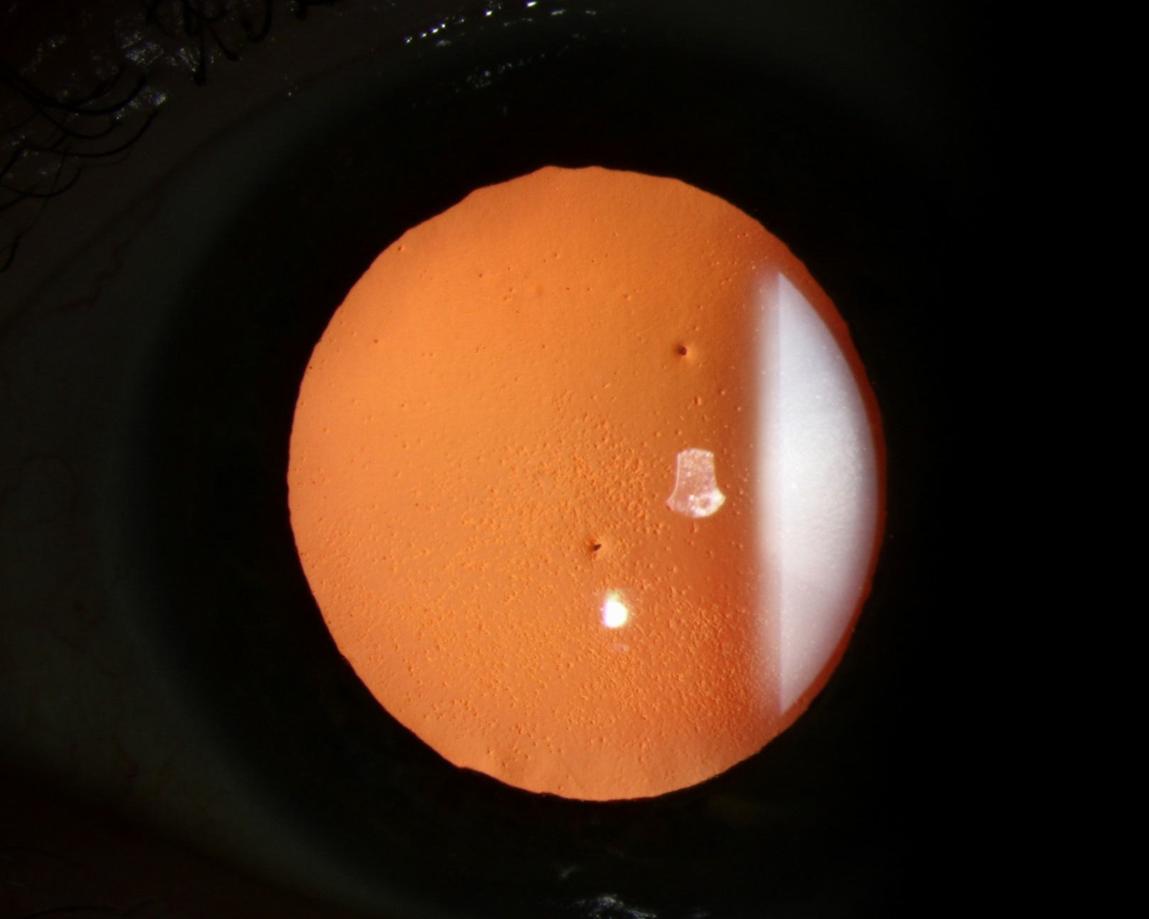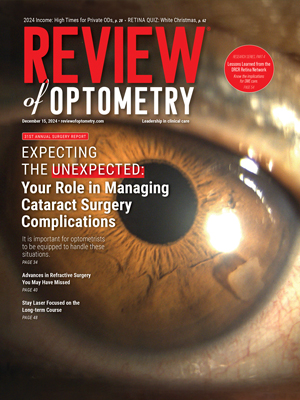 |
| Fuchs’ dystrophy may be linked with more positive mental health outcomes because those with the disorder know that an effective and less invasive treatment is available, progression of the condition is gradual and slow and also because of the relatively older age at which Fuchs’ becomes problematic and/or causes isolation when compared with corneal diseases associated with systematic conditions. Photo: Christine Sindt, OD. Click image to enlarge. |
It is well known that those with low vision are at risk of developing complaints surrounding mental health. Since many corneal diseases or conditions that lead to transplantation can lead to visual impairment, a team of Dutch researchers wanted to understand how corneal transplantation affects mental health outcomes and if there were any identifiable predictors.
Their prospective multicenter investigation included 238 patients awaiting transplantation in 11 different hospitals and eye clinics in the Netherlands. Different mental health scales were completed one month prior to transplantation as well as three, six, 12 and 24 months after,. The instruments used were the Centre for Epidemiological Studies Depression scale (CES-D), the Hospital Anxiety and Depression Scale-Anxiety subscale (HADS-A) and the Dutch ICF Activity Inventory Emotional Health subscale (DAI-EH) and Fatigue subscale (DAI-F).
From baseline to 24 months, scores on the CES-D and HADS-A improved, with mean scores falling from 8.6 to 7.7 and 3.7 to 3.2, respectively. Scores for the DAI-EH and DAI-F subscales also improved, with mean scores dropping from 10.7 to 7.5 and 17.4 to 11.3, respectively. After analysis, the researchers determined that male sex, Fuchs’ dystrophy and active coping styles predicted better mental health outcomes. Conversely, worse mental health outcomes were associated with comorbidity, dry eye complains and passive reactive coping style.
Subthreshold depression was found to be 17.9% in this study, which was notably higher than the 12% prevalence reported in a previous study of older Dutch adults, as well as being higher than the 8.5% of adults aged 18 to 75 with major depressive disorder in the Netherlands. Subthreshold anxiety in the current study was 11.5%, similarly seen in prevalence of older Dutch adults of 10.7%, but is lower than prevalence of anxiety disorders in those aged 18 to 75 in the Netherlands at 15.2%. The percentages of the current study are lower for subthreshold disorders than observed with populations of those with visual impairment, in which about one in three report subthreshold depression or anxiety. If only those with low vision were considered (visual acuity ≥0.50 logMAR), baseline subthreshold depression increases to 21.6% and anxiety to 13.5%.
The percentage of those with subthreshold depression decreased from 17.9% at baseline to about 11% at each follow-up measurement. Between baseline and 24 months, 6% improved at least 11 points, the minimum reaching clinical significance, while 6% improved at least 11 points between baseline and three-month follow-up. Percentage of those with subthreshold anxiety decreased from 11.5% at baseline to 10% at each follow-up measurement. Between baseline and 24 months, 21% achieved a clinically significant change and this was 18% that achieved this between baseline and three months.
From these results, the authors gather that “understanding these predictors can guide practitioners in providing more tailored preoperative counseling, potentially improving patient decision-making and managing expectations regarding corneal transplantation.”
| Click here for journal source. |
Elsman EBM, Van der Aa HPA, Billingy NE, et al. Long-term mental health outcomes after corneal transplantation and potential predictors: a multicentre prospective cohort study. Ophthalmic Physiol Opt. 2024;00:1-12. |


